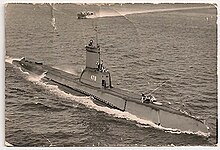
USS Argonaut (SS-475) was a Tench-class submarine operated by the United States Navy (USN). Constructed at Portsmouth Navy Yard during the second half of 1944, Argonaut was commissioned into the USN in 1945 and operated against Japan during the final year of World War II, although her only contact with the Japanese was when she sank a junk in August. During the 1950s, the submarine was modified for greater underwater endurance, and to guide the Regulus I missile. From 1963 to 1965, Argonaut operated in the Mediterranean Sea.
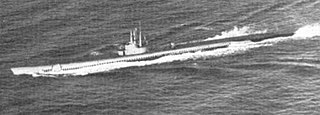
USS Runner (SS/AGSS-476), a Tench-class submarine, was the second ship of the United States Navy to be named for the runner, an amberfish inhabiting subtropical waters.
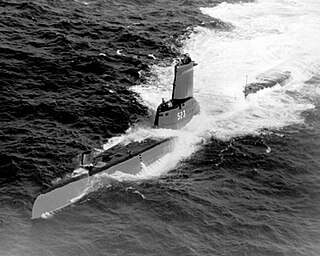
USS Grampus (SS-523), a Tench-class submarine, was the seventh ship of the United States Navy to be named for two members of the dolphin family (Delphinidae): Grampus griseus, also known as Risso's dolphin, and the orca, also known as the killer whale.

USS Dogfish (SS-350), a Balao-class submarine, was the only vessel of the United States Navy to be named for the dogfish.

USS Grenadier (SS-525), a Tench-class submarine, was the second ship of the United States Navy to be named for the grenadier, a soft-finned deep sea fish of the Macrouridae with a long, tapering body and short, pointed tail family, also known as rattails.
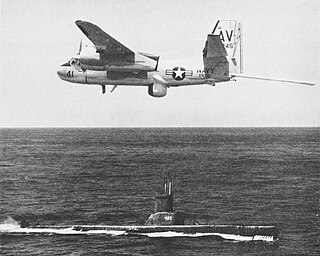
USS Sirago (SS-485), a Tench-class submarine, was named for the sirago, a small, freshwater tropical fish.

USS Sea Leopard (SS-483), a Tench-class submarine, was the only ship of the United States Navy to be named for the leopard seal. Her keel was laid down by the Portsmouth Navy Yard on 7 November 1944. She was launched on 2 March 1945 sponsored by Hon. Margaret Chase Smith, United States Congresswoman from Maine, and commissioned on 11 June 1945.

USS Irex (SS-482), a Tench-class submarine, was the only ship of the United States Navy to be named for the irex, one of the oceanic fishes belonging to the family carangidae.
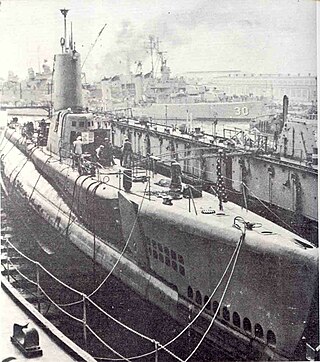
USS Medregal (SS-480/AGSS-480), a Tench-class submarine, was the only ship of the United States Navy to be named for the medregal, a streamlined, fast-swimming, bluish-colored fish of the jack family which abounds in waters of the West Indies and in the Atlantic as far north as the Carolinas.

USS Tusk (SS-426), a Balao-class submarine, was the only ship of the United States Navy to be named for the tusk, an alternate name for the cusk, a large edible saltwater fish related to the cod. Her keel was laid down on 23 August 1943 at Philadelphia by the Cramp Shipbuilding Company. She was launched on 8 July 1945 sponsored by Mrs. Carolyn Park Mills, and commissioned on 11 April 1946.

USS Trumpetfish (SS-425), a Balao-class submarine, was the only ship of the United States Navy to be named for trumpetfish, any of several fishes so-called for their deep, compressed body and long, tubular snout. Her keel was laid down on 23 August 1943 at Philadelphia by the Cramp Shipbuilding Company. She was launched on 13 May 1945 sponsored by Mrs. Oswald S. Colclough, and commissioned on 29 January 1946.

USS Entemedor (SS-340), a Balao-class submarine, was a ship of the United States Navy named for the entemedor, a fish of the electric ray family found in shallow waters from Baja California to Panama.

USS Cubera (SS-347), a Balao-class submarine, was a ship of the United States Navy named for the cubera, a large fish of the snapper family found in the West Indies.

USS Sablefish (SS/AGSS-303), a Balao-class submarine, was a ship of the United States Navy named for the sablefish, a large, dark fish found along North America's Pacific coast from California to Alaska.

USS Cobbler (SS-344), a Balao-class submarine, was a ship of the United States Navy named for the cobbler, the killifish of New South Wales.

USS Jallao (SS-368), a Balao-class submarine, was a ship of the United States Navy named for the jallao, a pearl-white haemulonid food fish of the Gulf of Mexico.

USS Sea Owl (SS/AGSS-405), a Balao-class submarine, was a ship of the United States Navy named for the sea owl, a lumpfish of the North Atlantic Ocean.

USS Sea Robin (SS-407), a Balao-class submarine, was a vessel of the United States Navy named for the sea robin. This is a spiny-finned fish with red or brown coloring on its body and fins. The first three rays of its pectoral fin separate from the others and are used in walking on the sea bottom.
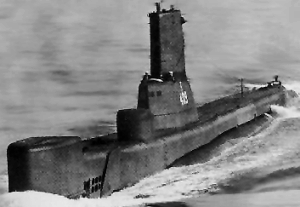
USS Piper (SS/AGSS-409), a Balao-class submarine, was a ship of the United States Navy named after the piper. Although built late in World War II, Piper completed three successful war patrols before the cessation of hostilities, operating as a life guard for plane strikes and as an advance picket for fast carrier task forces.

USS Huse (DE-145) was a U.S. Navy destroyer escort launched by Consolidated Steel Corp., Orange, Texas on 23 March 1943, during World War II. The ship was sponsored by Mrs. L. M. Humrichouse, daughter of Admiral Harry McLaren Pinckney Huse, whom the ship was named after and commissioned on 30 August 1943.

